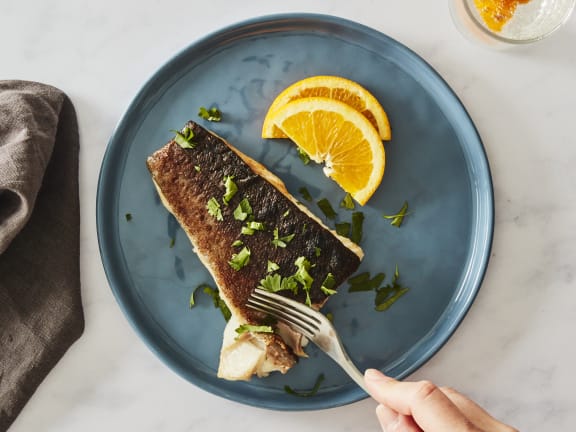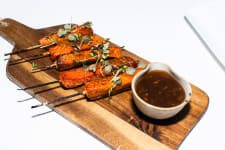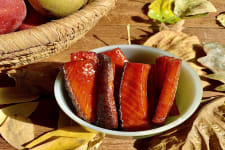Sablefish is a buttery, delectable white fish that brings decadence to the dinner table. It’s commonly known as black cod since it resembles Pacific cod, but it’s not actually a part of the cod family. There are big differences between cod and black cod in terms of taste and texture, despite the similarity in name and appearance. Sablefish has unique qualities, including its rich fat content, that set it apart from other white species in the cod family.
Sablefish’s mild yet decadent flavor profile makes it easy to work into a variety of dishes, which is one reason why “black cod” is often featured on restaurant dinner menus. For the home cook, black cod recipes are some of the easiest to make when you want a restaurant-quality meal. That’s because this species has a rich omega-3 fatty acid content helps the fillets stay moist, flaky, and tender no matter how it’s prepared.
What Does Sablefish Taste Like?

Sablefish has a melt-in-your-mouth buttery taste and incredibly flaky texture, earning it the name “butterfish” to add to black cod’s list of nicknames. Its rich fatty acid content is one of the key differences between cod vs black cod. Though mild in flavor like Pacific cod, this richness gives sablefish a distinct sweetness. These decadent characteristics help to make sablefish one of the highest valued finfish in Alaska.
The rich fat content of sablefish keeps it tender when cooked, whether it’s baked, pan-fried, poached, steamed, broiled, or grilled. The unique taste and texture of sablefish pairs extremely well with salty or acidic flavors, which help to balance the richness of the fish.
Is Sablefish Sustainable?
Sablefish is regarded to be a smart seafood choice by the National Oceanic and Atmospheric Association when it comes to sustainability. Alaskan sablefish is harvested responsibly from well-managed fisheries. The Alaskan fishing industry is the gold standard of sustainability.
Sablefish Nutrition
Sablefish has an overall higher fat content than other white species of fish from Alaska — and the highest amount of omega-3s among Wild Alaskan Company’s offerings.
Nutrition per 6-ounce serving:
-
Calories: 310 calories
-
Fat: 25 grams
-
Protein: 21 grams
-
Vitamin D: 5 micrograms, or 25% RDI
Since it has a higher fat content, consider pairing sablefish with other lower fat foods or minimizing the amount of oil and fats used in the cooking process. The rich oil content in sablefish also makes it an optimal keto protein food.
How to Cook Sablefish

Here are some step-by-step guides:
Where to Buy Alaskan Sablefish
Stock your kitchen with sustainably-caught sablefish by sourcing your seafood online from Wild Alaskan Company. You’ll get high-quality, wild-caught seafood delivered straight to your doorstep. Choose your fish subscription box today.






